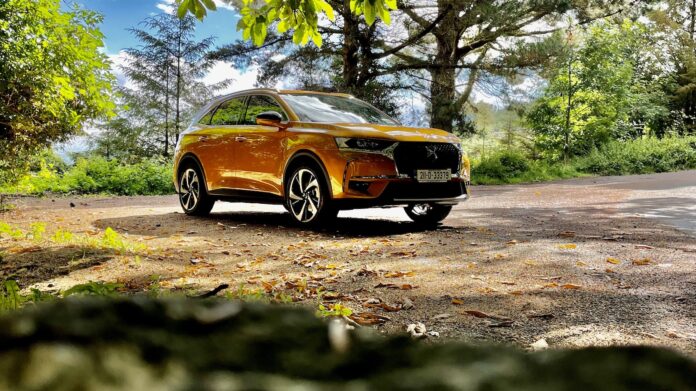30/08/2021 The DS 7 is mid-sized SUV with premium notions, that at the very least, is a refreshing alternative to the usual German stalwarts. The five-seater certainly cuts a dash on the street, while inside, the cabin feels plush and so it should starting at €46,995 – rising to €65,990. To date however the DS brand has failed to deliver on its promise to offer a product range that is unquestionably premium. Can the DS 7 change that perception? We’ve been testing DS’s largest SUV in plug in hybrid form to find out.
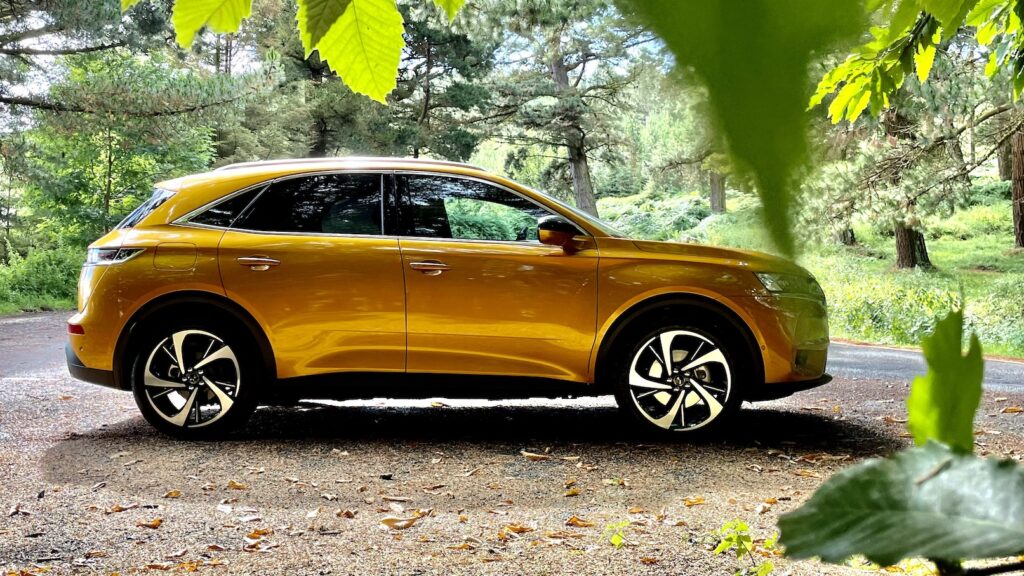
Appearances count. DS 7 has an imposing, stylish and commanding exterior. Its quite wide and low for its class but surprisingly short at 4,595mm (Audis Q5 4,682mm). The car’s look features numerous little touches that make you take a second look, I may have even looked back at it once or twice. Of course most onlookers on the street will have no idea what it is and that is a mixed blessing. Premium brand buyers mostly like people to know they are members of an elite (ish) club while more discerning owners are content to have excellent machinery at their disposal and happily leave admiring glances to others. DS is still in its infancy as a premium brand and little old ireland will have no impact on whether it succeeds – its China and large markets where the DS must do well. The Citroen spin off brand benefits greatly for the Stellantis Group’s parts bin and all DS models benefitted from shared platforms and powertrains.
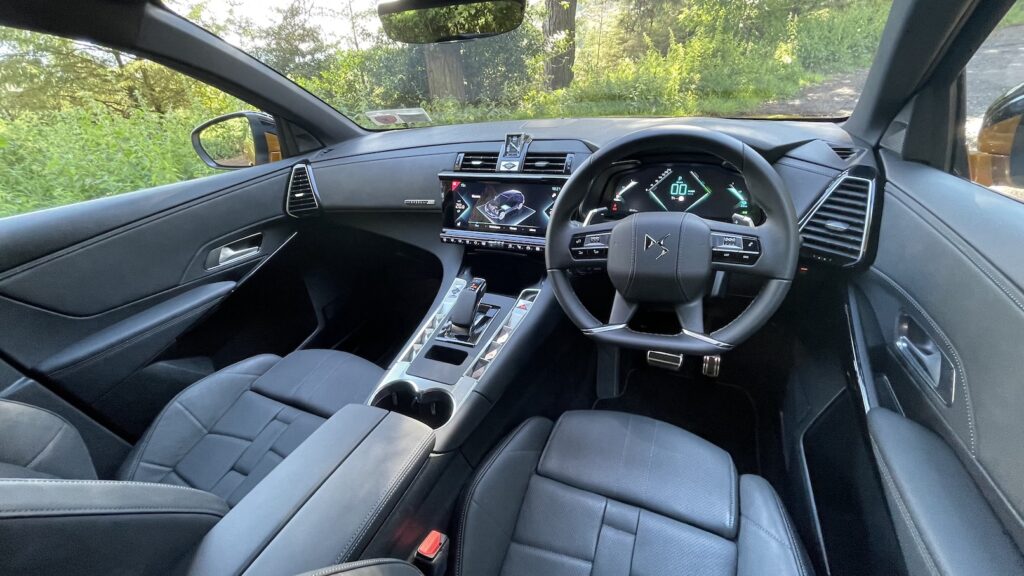
Inside, our high grade Prestige ‘Opera’ test car feels more upmarket that any equivalent German rival. There is soft Nappa leather seats and a nice B.R.M. pop up clock – sorry timepiece in the dashboard. The cabin is well put together but looks a little dated thanks to its slightly dated centre display. There needs to be more of a gap between Posh DS models and volume selling Citroens and Peugeots. DS 7’s exterior is very well executed but inside the dash area needs to be right up there with the likes of Mercedes-Benz – who for me leads the class right now. Our PHEV is petrol powered automatic with an additional and the effortless to use. My only niggle is the position of the start button. It is set in the middle of the dash, and when my driver’s seat is in the comfort access position is a bit of a stretch out of my seat – I know poor me!!! This is a tiny issue that should not be an issue in a premium car. The simple fact is that a premium car should never draw attention to itself as the whole process should be effortless and comforting. Don’t get me started on where the German premium sector is heading with subscriptions services for its cars – soon these premium brands will sell you a car with a wooden seat and then try to get you to subscribe to a cushion for a monthly fee! (takes break for 15 minutes to rant). Anyway the cabin is comfy and well appointed but not too far ahead of a high grade Citroen or Peugeot equivalent. All of the group’s latest driving and safety aids are available in the DS7.
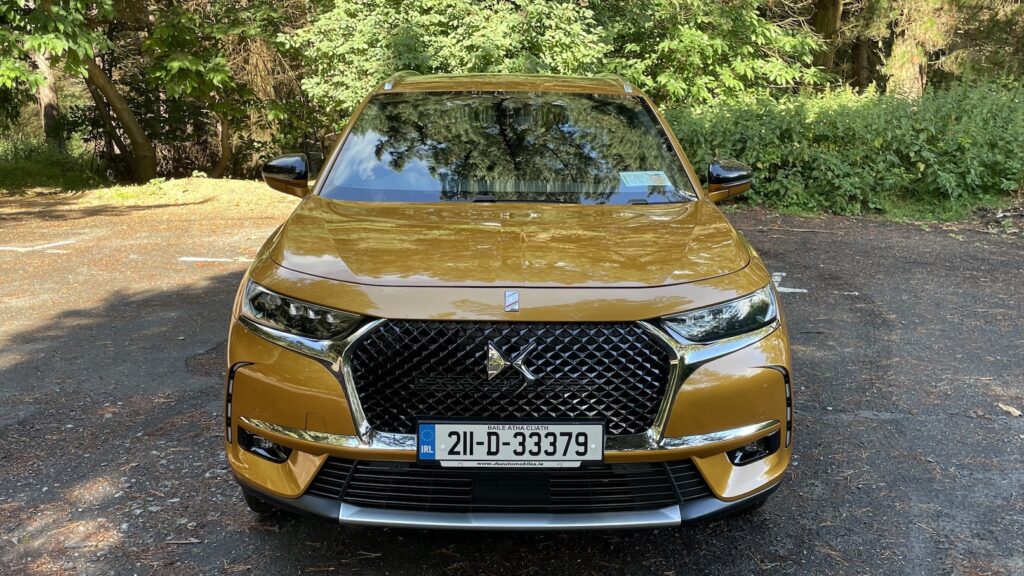
On the road our 225hp front wheel drive DS 7 PHEV is swift enough but not overly quick. Our 225 can go from 0-100km/h in 8.9 seconds (5.9sec. 4X4 300). All versions of the DS7 feature an 8-speed automatic gearbox. The car’s ride is comfortable and it encourages you to drive in a compliant way. The driver experiences that ‘weighty’ feeling that most premium car buyers love – but that weight also has a negative impact on fuel consumption. The EV only range is an industry standard 50km (circa) and ultimately we found the petrol tank too small for convenient driving. At the end of day two of testing the low fuel warring light came on! Thankfully the EV range is usable and managed quite a few days on electric power alone.
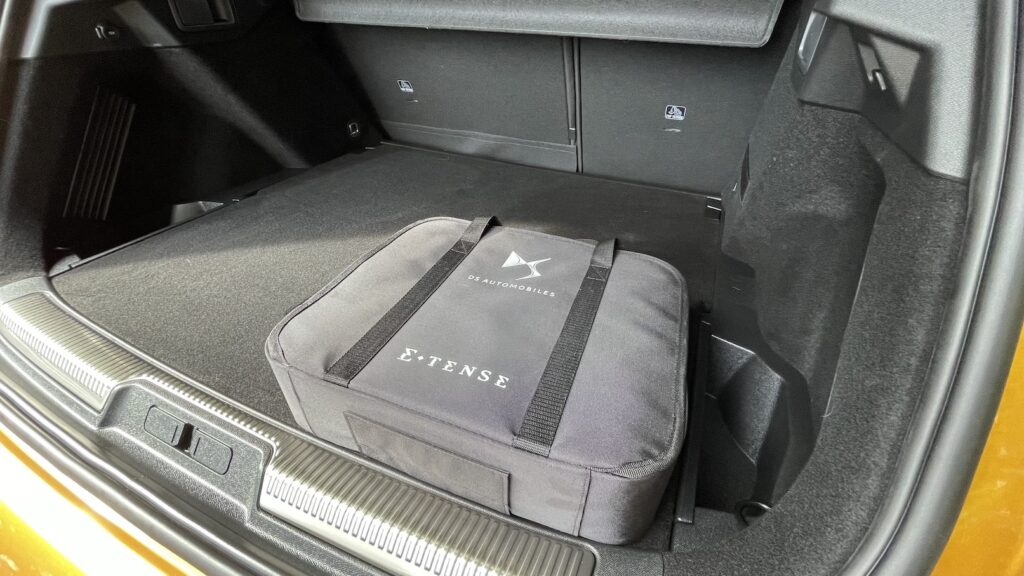
The selectable drive modes of our 1.6 litre petrol-hybrid offer: Sport, Hybrid, Comfort and Electric modes via a rocker switch on the centre console. With a petrol in the tank and a full battery exceptional fuel consumption is possible on shorter runs. DS quotes an average fuel consumption of 1.3-1.4 litres per 100km. Via the eSave button on the dash you can also charge up the battery with the engine on the go or even preserve an amount of electricity in the battery e.g 10%/20% or max. just as with its Stellantis PHEV siblings (with identical components). At a domestic 7kW type 2 charger the car takes just 1 hour 45 minutes to charge its 13.2kWh lithium-ion battery pack. A 1.5 litre 138hp ‘BlueHDi’ diesel (138g/km CO2) is the most affordable variant with the rest of the range E-Tense electrified models with a choice of front wheel drive (225HP) and 4X4 (300hp) with 32g/km CO2. Three grades are available: Performance Line, Performance Line+ and Prestige.
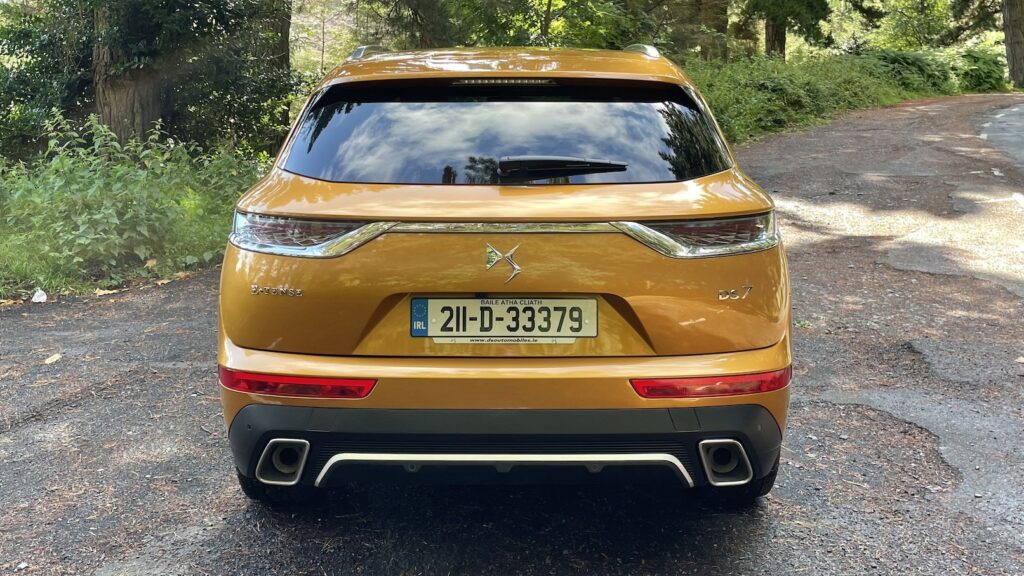
The small fuel tank and starter button position were my only real niggles with DS 7. It does a lot well, oh and could do with a better boot (555 litres) with a deeper split underfloor – the charging cables can push up the floor if not stowed carefully (most of us!). The DS 7 is well worth a look and its USP is that it will be a rare enough car despite its attractive (for premium) price point. As a previous owner of a class Citroen DS I am still a little miffed at the failure of the brand to deliver a seamless ride quality that was so much part of the original’s charm. DS does offer ‘Active Scan Suspension’ and this is a step in the right direction to honour the historic DS name. Michael Sheridan


